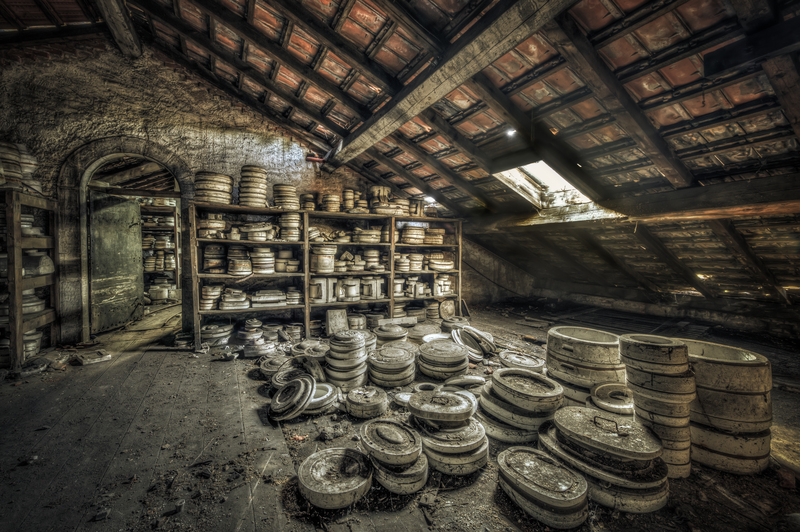Approaches to Ending Damp Smell for Good
Posted on 19/08/2025
Approaches to Ending Damp Smell for Good: A Comprehensive Guide
Damp smells can be a persistent nuisance, invading our homes, offices, basements, and even cars. Not only do they signal underlying hidden moisture issues, but they can also lead to discomfort, damage, and potential health hazards due to mold and mildew. If you've been battling the musty odor for a while, this comprehensive guide will explain effective approaches to end damp smell for good.

Understanding the Source of Damp Odors
Before addressing how to eliminate a damp smell permanently, it is crucial to identify its origin. Damp odors typically arise from excess moisture that fosters the growth of mold, mildew, and bacteria. These are the common causes to consider:
- Leaking pipes or plumbing fixtures.
- Condensation on walls, windows, or floors.
- Poor ventilation leading to trapped humidity.
- Flooding incidents or water intrusion during heavy rains.
- Wet or drying laundry kept indoors.
- Unattended spills on carpets, upholstery, or mattresses.
- Structural issues like cracked walls, damaged roofs, or faulty gutters.
Remember: Any musty, damp aroma lingering in your living space is a warning sign of a moisture problem that should not be ignored. Tackling the root cause is the first and most important step in achieving a fresh, odor-free home environment.
Effective Steps to Eliminate Damp Smells Forever
1. Identify and Fix Moisture Sources
The foundation of permanently eradicating damp odors is removing the moisture source. Follow these steps for a targeted solution:
- Inspect all areas prone to dampness: basements, attics, bathrooms, kitchens, and behind furniture.
- Check plumbing systems for leaks. Even minor drips can fuel significant mold growth over time.
- Assess windows and walls for cracks, gaps, or condensation buildup.
- Examine the roof and gutters for blockages or damage allowing water intrusion.
- Address drainage issues around foundations to prevent external water from seeping indoors.
Pro tip: Use a moisture meter to identify hidden dampness in floors or walls. Once detected, repair all faults and allow the area to completely dry before proceeding.
2. Enhance Ventilation
Improved airflow is a potent tool in the fight against persistent damp and musty smells. Consider these practical measures:
- Open windows and doors daily to create cross-ventilation.
- Install extractor fans in high-humidity zones like bathrooms and kitchens.
- Place air vents or air bricks in basements, crawl spaces, or lofts to keep air moving.
- Utilize ceiling or portable fans to circulate air, especially after cleaning damp areas.
- De-clutter rooms so air can flow freely behind and underneath furniture.
An adequately ventilated space discourages excess humidity buildup and prevents the return of a musty damp aroma.
3. Deep Clean Mold, Mildew, and Surfaces
Physical removal of mold and bacteria is critical in your mission to end the musty odor for good. Use these guidelines for a thorough clean up:
- Wear protective gear such as gloves and a mask to avoid exposure to mold spores.
- Clean hard surfaces (walls, floors, tile, wood) using a mixture of white vinegar, baking soda, or a specialized mold remover.
- Scrub thoroughly and ensure the area is rinsed and dried completely.
- For soft furnishings, use fabric-safe cleaning products or, in severe cases, dispose of irreparably affected items.
- Replace wallpaper and carpets if mold persists or the material cannot be properly cleaned.
- Empty and air out cupboards, wardrobes, and storage spaces--wipe with an anti-fungal cleaner.
Note: Professional remediation may be necessary for widespread black mold infestations or where structural elements (drywall, framing) are affected.
4. Use Dehumidifiers for Moisture Control
Invest in a quality dehumidifier to keep humidity levels between 30-50%. This approach is highly effective in persistent problem areas like basements or bathrooms:
- Choose an appropriately sized unit for the space.
- Monitor humidity levels with a hygrometer.
- Empty and clean the dehumidifier's reservoir regularly to prevent bacteria buildup.
- Run the appliance continuously during damp or rainy weather, or until moisture issues are resolved.
Long-term use can help prevent both the recurrence of damp and musty odors and structural moisture damage.
5. Absorb Odors with Natural Remedies
After eliminating the moisture and thoroughly cleaning, it's time to tackle any lingering damp scent using natural odor absorbers:
- Baking soda: Sprinkle on carpets, upholstery, and mattresses--leave for several hours before vacuuming.
- Activated charcoal: Place in bowls around the affected space; it draws out both moisture and odors.
- White vinegar: Bowl of vinegar left in the room for a day can neutralize odors without masking them.
- Zeolite bags: These naturally absorb both moisture and bad smells for continuous freshness.
- Fresh coffee grounds: Excellent for cupboard or wardrobe odors.
Important: These remedies help neutralize the odor but are most effective only after addressing moisture and cleaning.
6. Address Carpets, Bedding, and Soft Furnishings
Fabric materials tend to trap moisture and odors. For a long-lasting solution:
- Wash all removable fabrics (curtains, cushions, bedding) at a high temperature.
- Use laundry boosters or odor-eliminating detergents.
- Steam clean carpets, rugs, and upholstery for deep cleaning and odor removal.
- Dry items outdoors, if possible, in direct sunlight for natural freshness.
- Consider professional cleaning for stubborn cases or delicate materials.
Regularly cleaning and thoroughly drying fabrics is essential for preventing the return of musty damp odors.
7. Prevent Future Damp Smell
Once you've eliminated the source and neutralized odors, take proactive steps for a permanently fresh environment:
- Monitor home humidity with digital meters.
- Ventilate regularly, even during cold weather.
- Repair leaks and drainage issues immediately.
- Avoid drying laundry indoors (unless in a well-ventilated area or with a vented tumble dryer).
- Routinely inspect basements, attics, and crawl spaces for signs of moisture.
- Install water alarms near potential leak sources.
- Maintain roofing and guttering to prevent water ingress.
Prevention remains the best way to ensure damp smells don't return and to protect both your property and health.

Frequently Asked Questions about Beating Damp Smell for Good
Can air fresheners get rid of damp smell?
While air fresheners can temporarily mask musty odors, they do not address the root cause of damp smells--namely, ongoing moisture problems and possible mold. For long-term freshness, always fix moisture sources and clean thoroughly.
What is the difference between damp and mold smells?
Both odors arise from moisture, but a
Can certain building materials or furniture cause recurring damp odors?
Yes. Untreated timber, porous plaster, and old upholstered furniture readily harbor moisture and can sustain that musty damp aroma. Seal, replace, or deep clean these items after addressing overall moisture.
Is it possible to eliminate damp smells in basements for good?
Absolutely! Focus on improved drainage, sealing cracks, using dehumidifiers, and regular ventilation. In chronic cases, install sump pumps or consider professional basement waterproofing.
What health risks are associated with persistent damp and musty odors?
Prolonged exposure may lead to respiratory issues, allergies, headaches, or asthma, exemplifying the importance of ending damp smell permanently at its source.
Conclusion: Achieving a Long-Lasting Fresh Home
Successfully eliminating damp odors for good requires a holistic, multi-pronged approach: find and fix all sources of moisture, thoroughly clean affected areas, use the right odor-absorbing strategies, and take consistent preventative measures.
Embrace these comprehensive steps, and you'll enjoy a home that smells clean, fresh, and inviting--all year round.
Quick Recap: How to End Damp Smell Forever
- Identify and fix water or moisture sources.
- Boost ventilation throughout your property.
- Deep clean to remove mold, mildew, and bacteria.
- Use dehumidifiers to control humidity.
- Apply natural odor-absorbing remedies.
- Clean and maintain fabrics and soft furnishings.
- Adopt ongoing preventative maintenance for lasting results.
By following these expert-recommended approaches to ending damp smell for good, you'll create a healthier, fresher environment for you and your family. Don't let damp odors linger--take action today!





